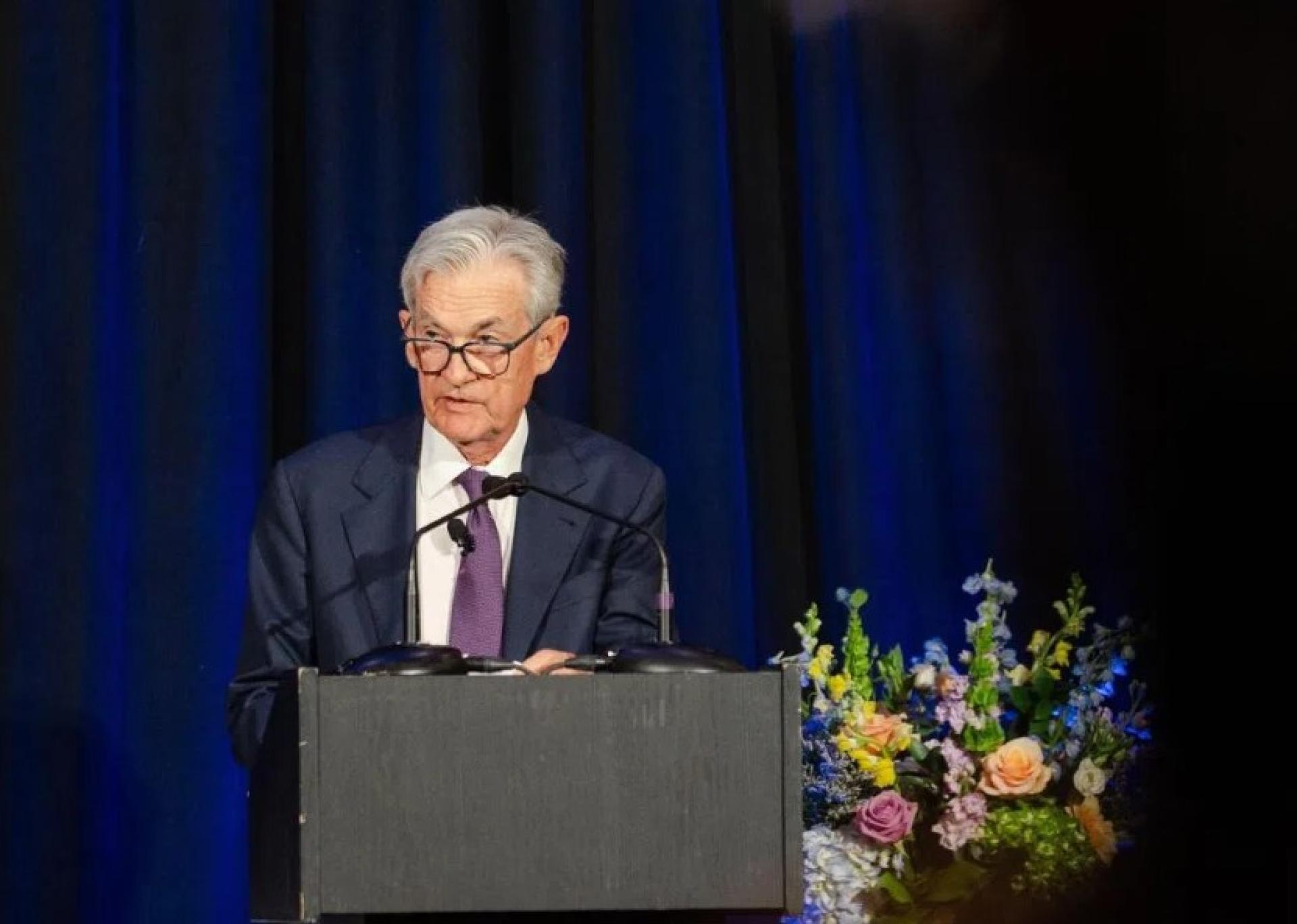(US, 24th) Federal Reserve Chairman Jerome Powell pointed out that the outlook for the job market and inflation faces risks, reiterating that policymakers may face tough choices when weighing further rate cuts.
Speaking Tuesday (September 23) at an economic outlook discussion at the Providence Chamber of Commerce in Rhode Island, Powell said: "In the short term, the risk of inflation is skewed to the upside, while employment risks are tilted to the downside. This is a challenging situation. Two-sided risks mean there is no risk-free path."
Powell did not reveal whether he would support a rate cut at the Fed's October meeting. However, he did address the tense political environment surrounding the Federal Reserve in a Q&A following his speech, denying that the central bank's decisions are influenced by political factors.
Powell's remarks were very consistent with his comments at the September 17 press conference, when the Fed lowered its benchmark interest rate to a range of 4% to 4.25%, marking the first rate cut for 2025. At the press conference, Powell described the move as a "risk-management rate cut," intended to address a growing number of warning signs in the job market.
Recent data and revisions to previous data show a significant slowdown in job gains, and officials are attempting to assess the situation. Meanwhile, stricter immigration enforcement policies by Trump have led to a tightening labor supply, making data assessment more complex.
According to Bloomberg, Powell said: "A significant slowdown in both labor supply and demand is an unusual and quite challenging thing, and in a lackluster, somewhat weak labor market, downside risks to employment have risen."
On Tuesday, Powell continued to emphasize that the Federal Reserve must remain cautious to prevent persistent inflationary effects caused by Trump's tariffs.
He said that tariff increases may take some time to flow through the supply chain, thereby leading to a one-time increase in price levels. This impact may be spread out over several upcoming quarters, with goods prices now driving an uptick in inflation.
Powell pointed out, "Recent data and surveys show that these price increases are mainly reflecting higher tariffs, rather than broader price pressures."
The challenges faced by Fed policymakers are highlighted by their considerable disagreement on the best path for interest rates. In the dot plot published after last week's meeting, policymakers' median forecast was for two more rate cuts this year, each by 25 basis points.
However, several officials believe there will be one more cut or no further cuts in 2025. Some officials continue to urge caution with further rate cuts, given that inflation remains above the Fed's 2% target.
Others are more focused on the labor market. Fed Governor Michelle Bowman said Tuesday that with the labor market weakening, officials should act decisively to lower rates, warning that policymakers could fall behind the curve. Stephen Miran, the Fed's new board member, called for a sharp rate reduction over the remainder of this year.
Speaking Tuesday (September 23) at an economic outlook discussion at the Providence Chamber of Commerce in Rhode Island, Powell said: "In the short term, the risk of inflation is skewed to the upside, while employment risks are tilted to the downside. This is a challenging situation. Two-sided risks mean there is no risk-free path."
Powell did not reveal whether he would support a rate cut at the Fed's October meeting. However, he did address the tense political environment surrounding the Federal Reserve in a Q&A following his speech, denying that the central bank's decisions are influenced by political factors.
Powell's remarks were very consistent with his comments at the September 17 press conference, when the Fed lowered its benchmark interest rate to a range of 4% to 4.25%, marking the first rate cut for 2025. At the press conference, Powell described the move as a "risk-management rate cut," intended to address a growing number of warning signs in the job market.
Recent data and revisions to previous data show a significant slowdown in job gains, and officials are attempting to assess the situation. Meanwhile, stricter immigration enforcement policies by Trump have led to a tightening labor supply, making data assessment more complex.
According to Bloomberg, Powell said: "A significant slowdown in both labor supply and demand is an unusual and quite challenging thing, and in a lackluster, somewhat weak labor market, downside risks to employment have risen."
On Tuesday, Powell continued to emphasize that the Federal Reserve must remain cautious to prevent persistent inflationary effects caused by Trump's tariffs.
He said that tariff increases may take some time to flow through the supply chain, thereby leading to a one-time increase in price levels. This impact may be spread out over several upcoming quarters, with goods prices now driving an uptick in inflation.
Powell pointed out, "Recent data and surveys show that these price increases are mainly reflecting higher tariffs, rather than broader price pressures."
The challenges faced by Fed policymakers are highlighted by their considerable disagreement on the best path for interest rates. In the dot plot published after last week's meeting, policymakers' median forecast was for two more rate cuts this year, each by 25 basis points.
However, several officials believe there will be one more cut or no further cuts in 2025. Some officials continue to urge caution with further rate cuts, given that inflation remains above the Fed's 2% target.
Others are more focused on the labor market. Fed Governor Michelle Bowman said Tuesday that with the labor market weakening, officials should act decisively to lower rates, warning that policymakers could fall behind the curve. Stephen Miran, the Fed's new board member, called for a sharp rate reduction over the remainder of this year.
